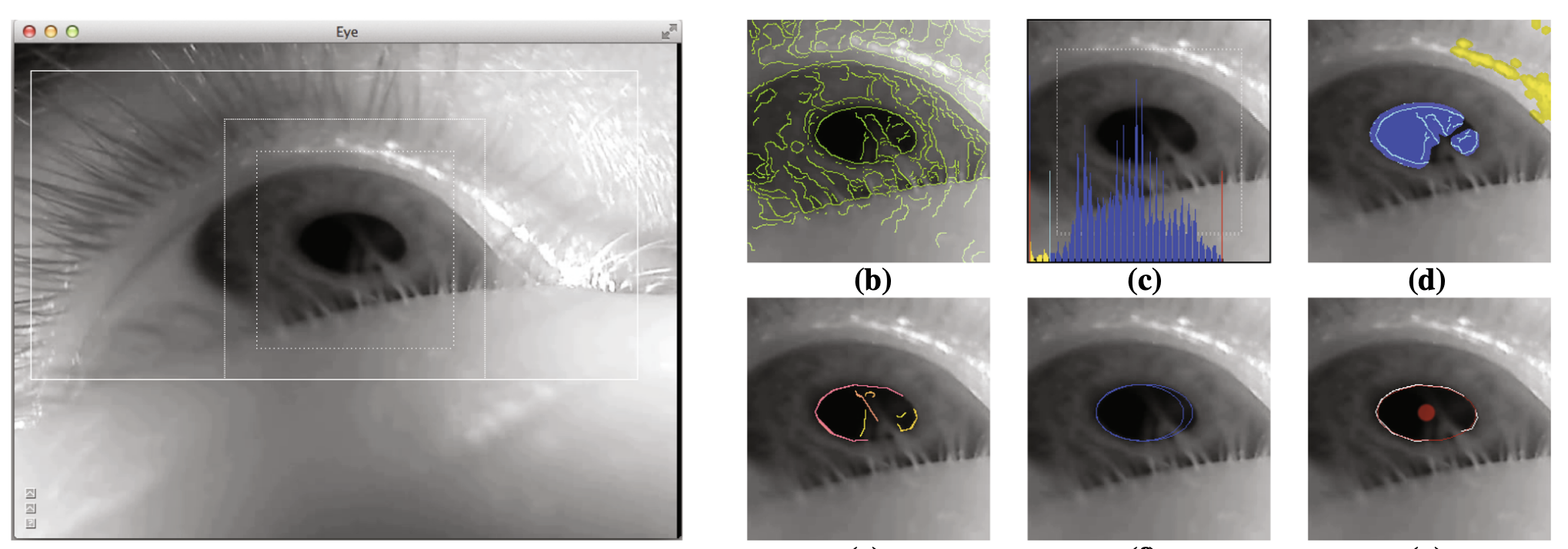Pupil detection for head-mounted eye tracking in the wild: an evaluation of the state of the art
Wolfgang Fuhl, Marc Tonsen, Andreas Bulling, Enkelejda Kasneci
Springer Machine Vision and Applications, 27, pp. 1275-1288, 2016.

Abstract
Robust and accurate detection of the pupil position is a key building block for head-mounted eye tracking and prerequisite for applications on top, such as gaze-based human-computer interaction or attention analysis. Despite a large body of work, detecting the pupil in images recorded under real-world conditions is challenging given significant variability in eye appearance (e.g., illumination, reflections, occlusions, etc.), individual differences in eye physiology, as well as other sources of noise, such as contact lenses or make-up. In this paper we review six state-of-the-art pupil detection methods, namely ElSe, ExCuSe, Pupil Labs, SET, Starburst, and Swirski. We compare their performance on a large-scale dataset consisting of 225,569 annotated eye images taken from four publicly available datasets. Our experimental results show that the algorithm ElSe outperforms other pupil detection methods by a large margin, offering thus robust and accurate pupil positions on challenging everyday eye images.Links
doi: 10.1007/s00138-016-0776-4
Paper: fuhl16_mvap.pdf
BibTeX
@article{fuhl16_mvap,
title = {Pupil detection for head-mounted eye tracking in the wild: an evaluation of the state of the art},
author = {Fuhl, Wolfgang and Tonsen, Marc and Bulling, Andreas and Kasneci, Enkelejda},
year = {2016},
pages = {1275-1288},
doi = {10.1007/s00138-016-0776-4},
journal = {Springer Machine Vision and Applications},
volume = {27}
}

